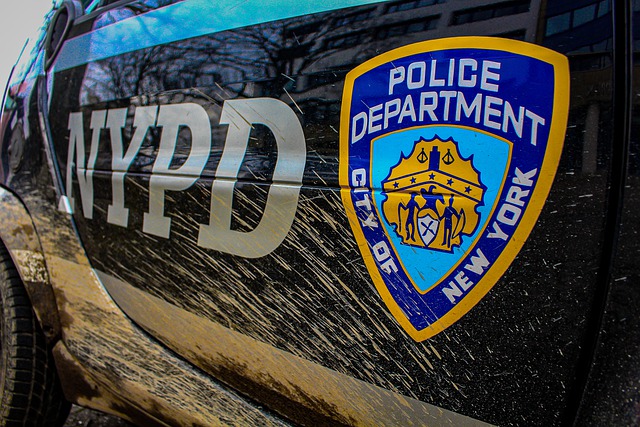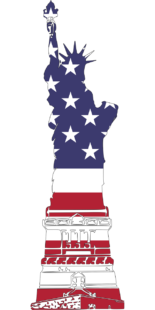Museum of The City of New York

Time, like a distorting mirror, distorts the memory of past events. In the Museum of The City of New York, you’ll see the city as it really is, feel its rhythm, and get a closer look at fascinating historical facts that you are unlikely to learn about anywhere else. For nearly a hundred years they have carefully collected and preserved all the most interesting things that happened in one of the world’s major metropolises.
The history of the Museum of The City of New York deserves a separate story. The museum was founded in 1923 by Scotsman Henry Collins Brown, a writer and popularizer of the city’s history, and at first it was located in Gracie Mansion, which at that time belonged to the Parks Department. But five years later, by 1927, the collection had grown so much that a new, larger space had to be found.
A dollar’s worth of city history
The city government donated a plot of land on Fifth Avenue between 103rd and 104th Streets, but this was clearly not enough: two million dollars had to be raised to build the new museum building, and, under the terms of the deal with the municipality, it had to be done in a fairly short time – by the first of June 1927.
Crowdfunding platforms did not yet exist, and specially established for this purpose charitable foundation literally “went to the people. Donations were advertised in newspapers and the subway. The minimum contribution was just one dollar. Both celebrities and ordinary people willingly donated to the history of their city.
The goal was reached, and the new building began to be erected just one year later, when the Great Depression hit. Despite this difficult period in American history, construction did not stop, although the grand plans had to be slightly revised. The museum building, designed by architect Joseph Freelander, and housing its vast collection, was opened January 11, 1932. In 1967, the Museum of The City of New York was officially recognized as a city landmark.
New move
In 2000, the museum began looking for new space. The board of directors voted to move to the renovated former courthouse in Tweed, downtown Manhattan, but the city administration placed the Education Department headquarters there. So the museum remained in its former location in East Harlem. Its reconstruction took about ten years and now the Museum of The City of New York is a beautiful exhibition space, restored according to all the rules of modern museum science. Gracie Mansion, the original home of the Museum of the City of New York, now houses the mayor’s residence.
What to see at the museum
The museum has several permanent exhibitions that you can visit throughout the year.
Urban Costume Exhibition
Clothes are not the only thing you see these days. The Museum of The City of New York boasts the largest collection of costumes and textiles, reflecting all the zigzags of capricious fashion over the last hundred years.
It’s not without its curiosities. A century ago, long before the environmental trend of recycling textiles began, an ingenious local tailor made old-fashioned men’s shirts into… maternity dresses! And that’s not the only exhibit worth seeing.
Manuscripts, prints, and sundries
This collection very accurately reflects the daily life of New Yorkers over the past three hundred years. It includes newspapers and magazines, invitation cards, restaurant menus, pennants, badges, and more. Of special note is a pamphlet issued by the MTA in 1950, which describes in detail, with numerous illustrations and maps, the newly constructed Brooklyn-Battery Tunnel (now called the Hugh L. Carry Tunnel).
Construction of this unique engineering structure began in 1940, but was delayed due to a shortage of building materials during World War II. Brooklyn-Battery is still considered the longest underwater vehicle tunnel in North America.
The Museum of The City of New York has more than 400,000 prints and negatives in its collection, priceless and honest testimonies of everyday life in the Big Apple from the mid-nineteenth century to the present day.
Silverware Collection
The silverware collection has over 2,600 items. It is broadly representative of silverware and accessories, award-winning weapons, and religious objects made by New York City jewelers and designers over the past two hundred years.
Theatrical Collection
More than 200,000 items documenting New York’s theatrical life since 1785. In this vast collection you’ll find posters, letters, scripts with original annotations, set designs, and costumes.
A collection of drawings and watercolors
The Museum of The City of New York’s collection of drawings and watercolors includes some 600,000 works by both famous and unknown artists and showcases the full range of American art from the early 19th century to the present day.
Hurry up and see
The Museum of the City of New York has approximately 750,000 exhibits. In addition to the permanent exhibit, the Museum of The City of New York has a variety of exhibitions on the most significant events in the life of the Big Apple.
Through October 14, you can visit an exhibit explaining how the bicycle has evolved from a recreational vehicle to a meaningful mode of transportation in New York City over the past two hundred years.
Through December, the Museum of The City of New York displays the work of Fred McDarr, photojournalist for The Village Voice Of The Village and Pride.
McDarr documented the turbulent life of New York in the 1960s and 1970s. Of particular interest are images that did not make it to the pages of the newspaper.
Another interesting exhibition, Urban Indian: Native New York Now, tells the story of the integration of Native Americans into the urban environment of New York.
Among the exhibits are paintings, photographs, works of applied art, and historical evidence of Indian community life. The exhibition will be on display until next March.
The exhibition, “City of Workers, City of Struggle,” focuses on the history of labor unions and its leaders. The labor movement in New York City began in the early 19th century and over the next two centuries evolved from a patchwork of craftsmen to a powerful political force. Featuring rare photographs, letters, and documents, the exhibit gives a clear view of the social, economic, and political aspects of workers’ lives and how workers’ struggles for their rights evolved.
Come to learn
The Museum of The City of New York attaches great importance to educational programs. There are often lectures, seminars, tours, workshops, and master classes for students and students of all ages, parents, and teachers.
The Museum of The City of New York is open daily except for Thanksgiving, Christmas and New Year’s Day.
Tickets are $20 and $14 for those over 65 and students. Visitors under the age of 19 are free.
How to get there
The museum is located on the famous Museum Mile, next to Central Park, three blocks from the 103 Str. subway station. (Line 6). You can take the A, B, C, or D lines to 103 Str., but they stop on the opposite, west side of the park.
